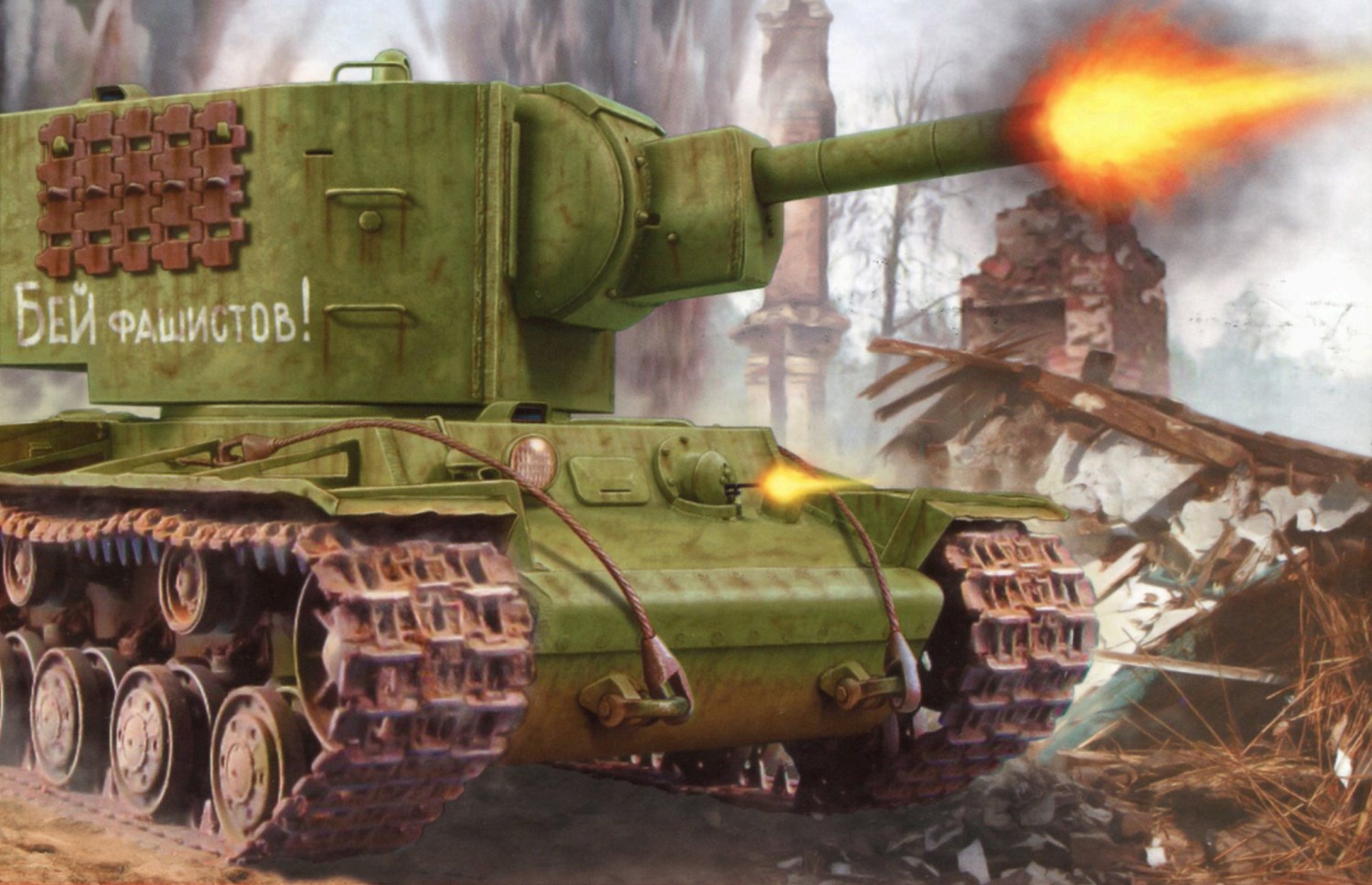
The KV-2 looked more formidable than it actually was.
It was excessively heavy, and coupled with a 500-horsepower diesel engine it
was slow and not very maneuverable. The massive turret weighed twelve tons,
rotated slowly, and would not traverse if the ground was not reasonably flat.
Hull armor was very heavy for the period at 75mm for the hull and turret sides
and 110mm for the turret front.
Production of the KV-2 was dropped by late 1941,
although, to the Germans’ horror, such a giant could be hit over 11 times with
no apparent effect whatsoever.
Combat experience gained during the Russo-Finnish War had
shown that the existing Red Army tanks lacked the firepower necessary to
destroy the heavily reinforced Finnish army bunkers being encountered. At the
prodding of a senior general of the Red Army commanding troops in Finland, a
new heavy breakthrough tank was conceived. In the span of two weeks a plan was
hatched to mount a newly-designed turret mounting an M-10 152mm howitzer on an
unmodified KV-1 series chassis. A prototype of this stop-gap vehicle was ready
for testing in January 1940.
The initial prototype and a small number of very early
series production units of this new heavy breakthrough tank were referred to as
the KV-2 Model 1939. They featured a fairly complex angled turret design. The
follow-on production units had a simpler and quicker to build turret design and
were designated the KV-2 Model 1940. Production of the KV-2 series, nicknamed
the `Dreadnought’ by its crews, began in November 1940 and continued until
October 1941 with 334 units completed. Besides its main gun, the KV-2 was armed
with three 7.62mm machine guns with the KV-2 Model 1940. Maximum armour
thickness on the front of the KV-2 turret was 110mm.
Compared to the typical KV-1 series tank that weighed in at
roughly 94,000lb (43mt), the six-man KV-2 might weigh as much as 114,000lb
(52mt). The added 20,000lb (9.1mt) overloaded a chassis that was already
plagued by automotive design issues. This made the KV-2’s on-and off-road
mobility inferior to the KV-1 series. The large, heavy and unbalanced turret on
the KV-2 also caused problems in traversing it on anything other than level
surfaces.
Some KV-2s were based in the western military districts of the Soviet Union that took the initial invasion blows of the German army. On those occasions where the KV-2 series was encountered by advancing German army units in the summer of 1941, the vehicle’s thick armour provided it with immunity to almost every weapon in the German arsenal except the 88mm FlaK gun. Fortunately for the German army, the KV-2s were few and far between, with most being lost to mechanical failure or lack of fuel. A small number of KV-2s would survive long enough to see service during the fighting for Stalingrad, which lasted from August 1942 until February 1943.